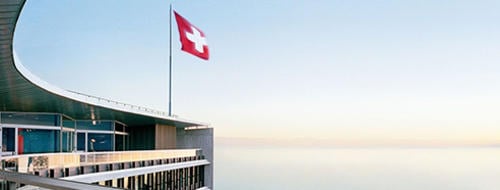By accelerating the development of products and technologies that make use of agricultural raw materials that would otherwise have gone to waste, Nestlé is working to lower its environmental impact by reducing water usage and greenhouse gas emissions across the value chain, in line with its ambition to achieve net zero greenhouse gas emissions by 2050.
The use of raw materials and side streams in products or processes creates new revenue streams for farmers as well as for startups focused on developing food ingredients or packaging materials.
For example, Nescafé Nativ Cascara, a carbonated soft drink based on organic cascara – the 'coffee berry' fruit that surrounds the bean – has just been launched in Australia. Using this antioxidant-rich coffee berry to brew a trend-based beverage creates a new purpose for an agricultural side stream that typically goes to waste.
By extracting the sun-dried cascara husk with water and infusing the brew with botanicals, Nestlé product developers created a novel beverage with a floral and fruity flavor. It is free from preservatives, artificial colors and flavors and has the same caffeine content as one cup of coffee.
Coffee polyphenols are natural plant-based antioxidants found in green coffee beans. A byproduct of the coffee decaffeination process, they now feature in Buxton Plant+Water, a plant-infused functional spring water launched recently in the UK. Perrier Energize, unveiled in December in the U.S., also includes organic caffeine otherwise lost via decaffeination, as does Nescafé 2X Caffeine, which uses additional, organic natural caffeine to give people twice the natural boost.
Not only are coffee products valorized in Nestlé products, but also, for many years, coffee grounds from soluble coffee production have served as an energy source in the company's coffee factories and are used in more than 22 worldwide to generate steam. In Switzerland, grounds are even fermented to produce biogas, which provides electricity for the Swiss grid, while the fermentation residuals are used as eco-friendly fertilizer by farmers.
Nestlé scientists are also exploring the potential of coffee production side streams as ingredients for bio-based packaging materials.
Turning to cocoa, Nestlé experts have developed a unique 70% dark chocolate made using a single ingredient – cocoa. This is the result of a natural process whereby the cocoa pulp – another traditionally unused byproduct, is dried and used with the beans to create a unique chocolate with no refined sugar. The innovation was launched in Japan under the KitKat Chocolatory brand, and in March 2021 we started a wider roll out of this new innovation, launching Incoa under Les Recettes de L'Atelier brand.
While creating additional purpose for the agricultural raw material used in our products is essential, Nestlé is also looking into making use of so-called 'ugly' fruits and vegetables. For example, a Maggi soup range test launched last autumn, Krumm Glücklich ('Crooked but Happy'), uses vegetables that would have otherwise remained unsold due to their appearance and gone to waste.
Thomas Hauser, Head of Nestlé's Product and Technology Development, said: "Developing new products and technologies using agricultural side streams is one way to reduce environmental impact and it creates new opportunities for farmers. We are committed to addressing food loss – to create new value for raw materials and develop innovations that are good for you, and the planet."
Nestlé is developing more climate-friendly or carbon neutral products, working on technologies to reduce greenhouse gas emissions, and increasing our use of 100% renewable electricity. Sustainable packaging and more sustainable crops developed through our plant science research are other important focus areas.
________
Content updated in March 2021: mentions of Nescafé 2X Caffeine and Incoa



